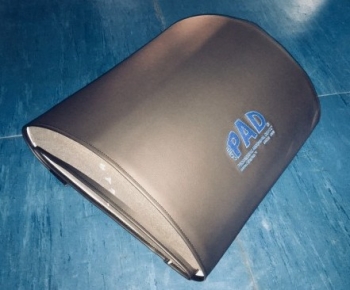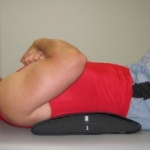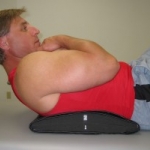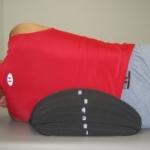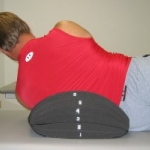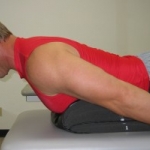Contraction Tools™
Product Description
The CorePAD™ (Progressive Abdominal Device™) is a serious exercise tool for the exercise professional that understands the value of MicroProgression®. It allows one to progress into starting positions of extension for crunches before introducing other complicating challenges such as unstable support like a ball. It can be used for a variety of other exercises as well.
A Note of Truth: This device is not magic. Just like any other exercise device, the CorePAD™ will not spot-reduce fat from one's midsection.
RECOMMENDED FOR PURCHASE ONLY BY QUALIFIED EXERCISE PROFESSIONALS
The CorePAD™ is only recommended for purchase by professionals that have attended RTSm UE, RTS3 UE, or CDU and have been shown how to use and how not to use them for specific individuals and specific goals!
It is highly recommended these tools be stored in a place preventing access by the general public as well as trainers who have NOT attended RTS3!
This device is designed for use only by a qualified Exercise Professional who has demonstrated competency in Exercise Mechanics, structural evaluation, the neuromuscular influences upon structure, spinal mechanics and pathology, and the thought process associated with the implementation of the RTS® principles of MicroProgression®, Strategic Variation® within the Functional Continuum® as determined by an individual's Skeletal-NeuroMuscular Opportunity.
The CorePAD™ is never the place to initiate crunches with an individual. As the "P" in P.A.D. indicates, it is for the Progression of crunches... once tolerance and competency are established. It is numbered for progression of the starting position of crunches (spinal flexion) only and therefore for this exercise should always introduced at the lowest pad level/height. Other motions of the spine may best be introduced at specific higher levels.
Contraindications:
Any pathology or condition of the spine for which this pad has been used for rehabilitation can just as easily become a contraindication for its use in the hands of those who do not fully understanding the precise implications of the specific spinal condition and/or do not understand the process of MicroProgression®. Furthermore, "apparently healthy" individuals can demonstrate lack of tolerance for any exercise or motion taken to extremes. Conditions for which the use of this pad should be restricted or prohibited until further evaluation of its impact and tolerance by the individual client include but are not limited to:
- Spondylolisthesis
- Harrington rods
- Narrowing of the intervertebral foramen
- Spinal stenosis
- Spinal fusion
- Various disk pathologies
- Structural instabilities of the spine
- Sacroiliac dysfunctions
- Pregnancy
Exercise Specific Considerations include but are not limited to:
Rehabilitation:
- CorePAD® use for rehab should only occur after the patient demonstrates competency with both basic segmental stabilization training and elementary motion exercises.
- Even level 1 may be extremely advanced for specific spinal rehab patients.
Crunches:
- The individual must demonstrate complete competency on a flat surface such as the floor prior to introduction of any degree of "starting extension".
- DO NOT start above level 2 for pain free individuals and level 1 for those in spinal rehab.
- DO NOT progress more than one P.A.D. level at a time and only when complete competency has been demonstrated via precise control over the path of motion, range of motion, and inertia.
Diagonal (oblique) Crunches:
- The introduction of the CorePAD™/extension position into crunches that involve spinal rotation (with the pelvis/legs rotated to the left or right) should only be offered by Exercise Professionals with an understanding of Type III coupled movement mechanics wherein the introduction of extension limits facet movement into rotation and vice versa.
- Therefore, this exercise should be introduced after the individual has progressed into extension positions on regular crunches, and then with a lower P.A.D. level. (For example, when crunches reach level 4, diagonals might be performed at level 2.)
Sidebending:
- Begin with enough P.A.D. levels to bring the spine of the sidelying individual to frontal plane neutral or even further by starting in lateral flexion toward the table (apex up).
Extensions:
- Begin with a comfortable amount of spinal flexion (or reduced extension) prone over the pad.
- The size of one’s midsection will play as great a role in your choice of starting level as his/her available spinal range.
- Most individuals will be able to start comfortably on level 6. In fact starting flat or at the lowest levels may be uncomfortable due to prone creating an extreme of extension.
The 4 rules of exercise control:
- It's not a rep/set unless it's precise and controlled.
- The first rep should look exactly like the last rep.
- Stop the set when the static joints move, when the moving joints no longer move with precision.
- You should be able to stop immediately at any point in the range.

